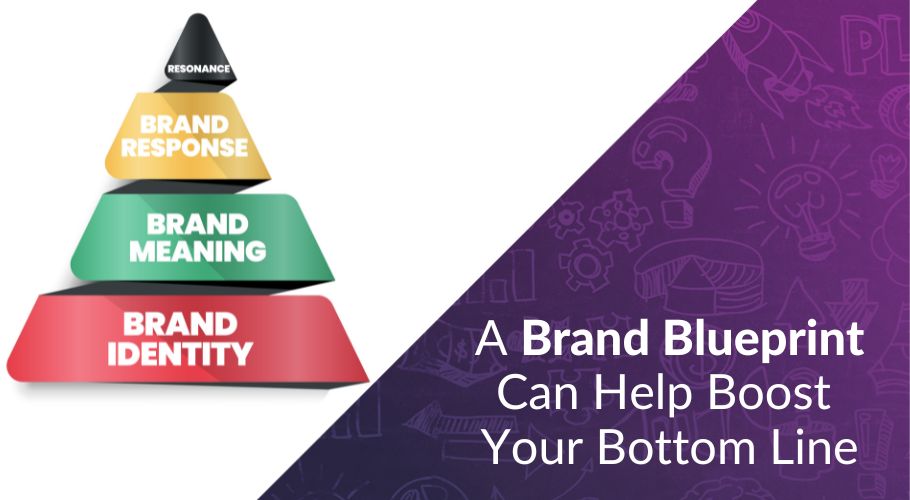In my last article, I explained the importance of brand positioning in relation to the sales process.
More importantly, I offered some insight into how several features of brand positioning can help you to improve your entire sales journey.
But what I didn’t cover was how to define the positioning of your brand by creating a brand blueprint, which can help you to ensure consistency across all aspects of your branding, and make sure every member of your team is on the same page when it comes to your brand positioning.
With that in mind, I wanted to elaborate on this further, explaining what a brand blueprint is and how to create one, why it’s so important to your brand positioning, and how this all relates to the sales process.
So, if you’re looking to boost your bottom line and improve your sales process, or asking, “What is a brand blueprint, and how does it relate to sales?” then make sure to keep reading.
And if you want to learn more about brand positioning, you should check out Harnessing the Power of Brand Positioning: A Five-Part Video Series for Small Business Owners.
What is a Brand Blueprint and How Does it Relate to Sales?
Before you come into contact with a sales prospect, they will probably have seen some aspect of your branding, be it an email, ad, blog article, social media post, or something else entirely, and this is when the first impression is made.
If those touchpoints of your branding have made a good impression, then you’ll want to continue to build trust with them, which is typically done during correspondence like phone calls, Zoom calls, or emails.
And if you want a potential customer to convert, you’ve got to nail every part of this process, otherwise, you can end up turning them off, and you’ll have wasted a viable opportunity.
But if you don’t have consistent brand positioning in place across every last feature of your branding, marketing, and sales journey, then it could be very challenging to get anyone to convert.
This is especially true if you’re doing something that contradicts any other feature of your branding, to which potential customers have been exposed.
One of the best things you can do to protect the integrity of your brand and avoid turning off sales prospects is to create what’s known as a brand blueprint.
A brand blueprint, also known as a brand framework or brand architecture, is a strategic document that serves as a plan for developing and managing a brand.
It provides a comprehensive overview of your brand’s purpose, values, mission, personality, messaging, target audience, visual identity, and more, acting as a guiding document to ensure consistent communication and alignment across all brand-related activities.
As it relates to the sales journey, a brand blueprint will give your staff and sales team a framework to follow so they don’t ever misrepresent your brand by doing something that could be misconstrued or perceived as being misaligned with the rest of your brand positioning.
READ: Crafting a Unique Selling Proposition: Unleashing the Power of Your Brand

One of the most vital aspects of brand positioning is ensuring consistency throughout each and every part of your branding.
Because if your brand doesn’t have this kind of consistency, you can end up confusing potential customers, sending them the wrong message, or contradicting other parts of your branding.
So, if you want to learn why brand consistency is so important, how you can ensure consistency for your brand, and explore some of the most epic fails of inconsistent branding, then this article is for you.
How to Create Your Own Brand Blueprint
You might be wondering how you can go about creating your own brand blueprint.
Keep in mind that a brand blueprint can take a lot of time to create, as it requires you to painstakingly analyze every aspect of your brand and determine how it’s going to be portrayed to the public, and how you’d like it to be perceived in relation to your competitors.
Below I’ve listed several common features of a brand blueprint, with explanations of how to define these aspects of your brand, so you can begin to create a blueprint for your brand, and improve your sales journey in the process.
Brand Purpose
Your brand purpose captures your brand’s mission, vision, and overarching goals, and defines the reason for your brand’s existence, beyond just generating profits.
In order to define this aspect of your brand, think about what you’re looking to accomplish with your brand, how your products and/or services can help potential customers or enhance their lives, and how the purpose of your brand stacks up against those of your competitors.
Brand Values
Your brand values are the core principles or beliefs that will guide your brand’s behaviour, decision-making, and communications with stakeholders.
To define these values, you’re going to want to think about the morals and ethical principles you’d like your brand to follow and represent, how that’s going to affect your interactions with potential clients, returning customers, and the public at large, and how that relates to the values of your competitors.
Unique Selling Proposition
Your unique selling proposition, or USP, is a distinctive and compelling statement that communicates the unique benefits and advantages of your products and/or services, and your brand as a whole, compared to your competitors in the market.
Coming up with a USP requires you to consider what makes your products and/or services unique, especially in relation to similar offerings from your competitors, and how you’re better equipped to help solve the problems or fulfill the desires of potential customers.
Brand Personality
Your brand personality describes the human-like traits and characteristics that define your brand’s tone of voice, communication style, and overall persona.
If you want to define this aspect of your brand you need to think about how you’d want your brand to be perceived if it was a person. Think about whether you’d want it to come off as friendly and approachable, trendy and modern, or something else entirely, and then decide how that can be reflected in your imagery and communications.
Target Audience
Your target audience is the specific group or segments of customers that your brand aims to serve, and who are most likely to be interested in whatever it is you’re offering.
In order to define this aspect of your brand, you need to look at the demographics of the customers you’re serving, or hope to serve, and consider all the relevant psychological and/or behavioural traits of these people that can help you to understand their needs, desires, and preferences.
Visual Identity
Your brand’s visual identity includes its logo, colour palette, typography, imagery, and any other visual elements that are going to be used to represent your brand, providing guidelines that can help you to maintain visual consistency across all touchpoints.
Defining this aspect of your brand should probably be the last step in creating your brand blueprint, as it will likely be informed by all the other aspects of your branding.
Once all the other features of your brand have been defined, take some time to think about how you want your brand to be portrayed visually, how this imagery is going to make people feel when they see it, and how accurately it will be able to represent all the other aspects of your brand.
Do you need help creating your own brand blueprint? We’ve been helping business owners to build their brands for more than 20 years. Contact us today to find out more about what we can do for you.
To your business success,
Susan Friesen
P.S. If you liked the article, you might want to subscribe to our newsletter. We publish tons of valuable content to help you learn more about marketing, and subscribing is the best way to ensure you don’t miss out. Additionally, if you’d like to learn more about building a search engine optimized website, click here for our free website guide.







